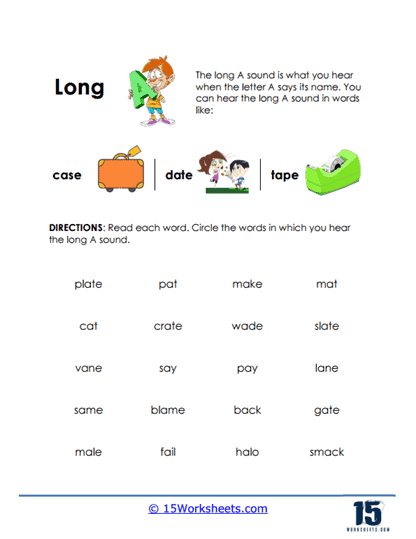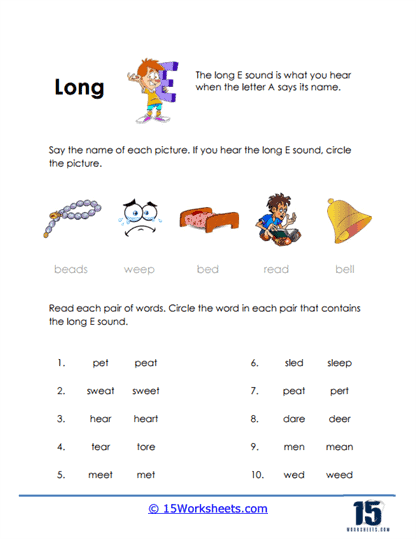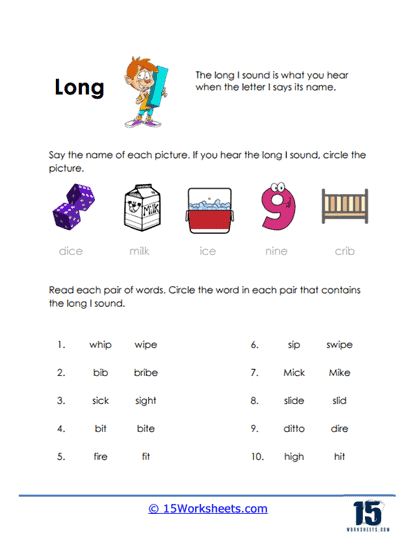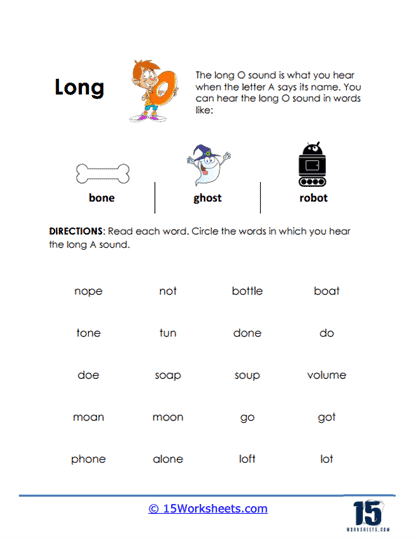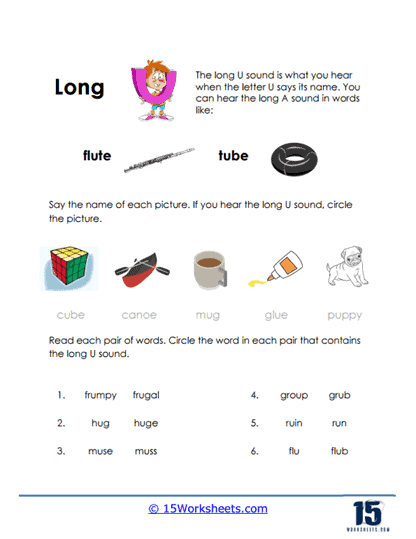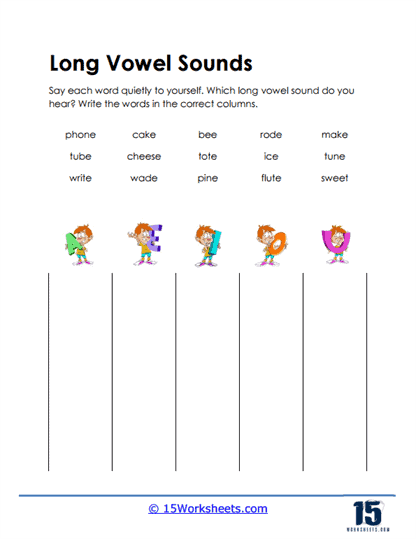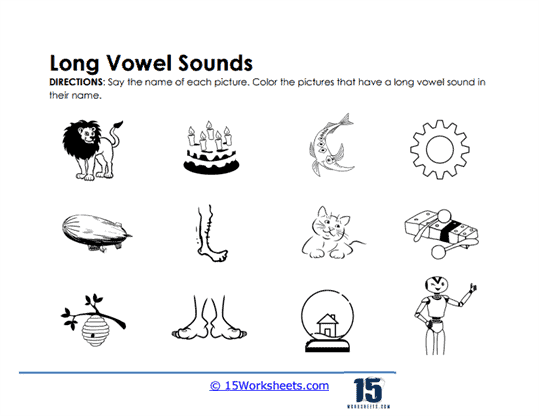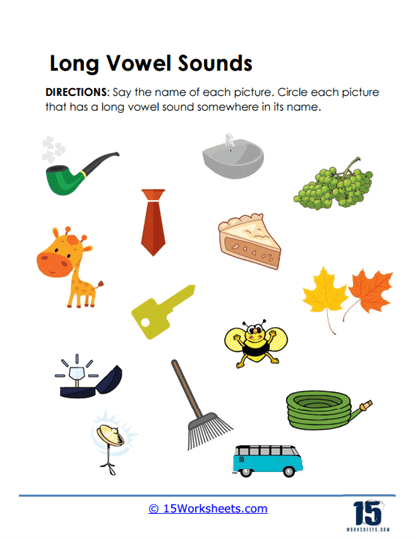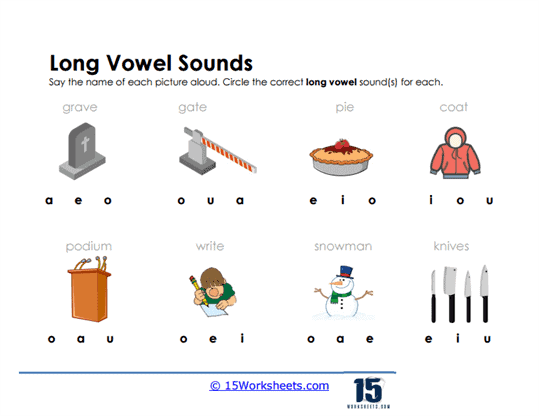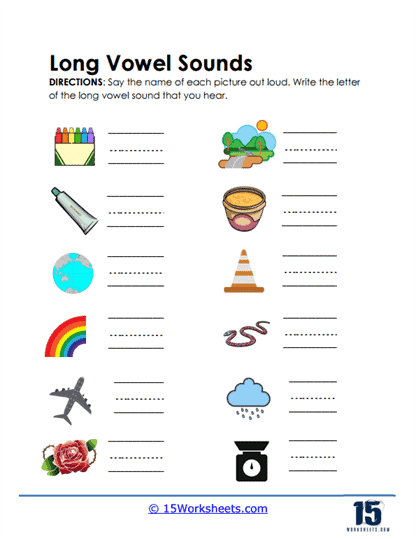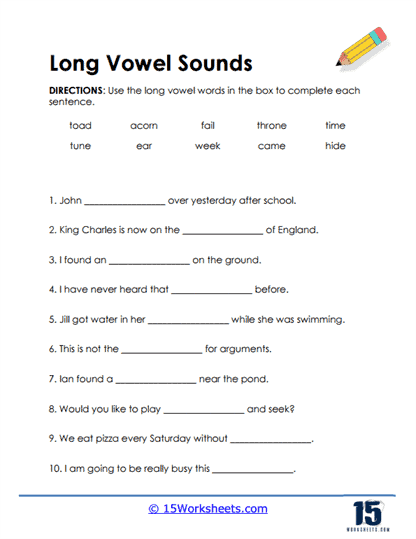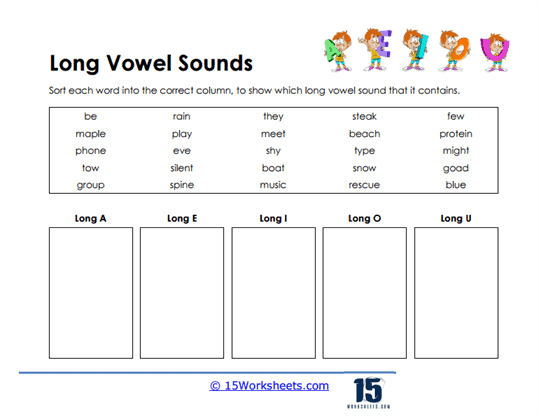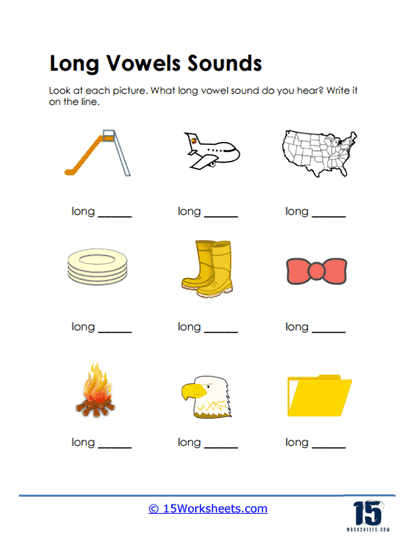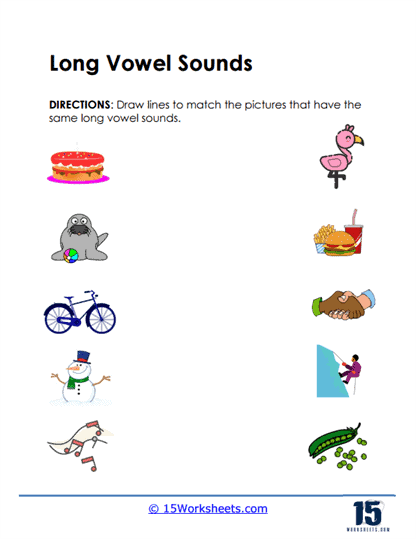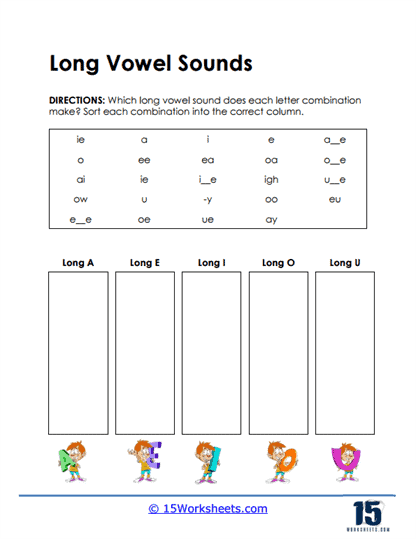Long Vowel Sounds Worksheets
All About These 15 Worksheets
Long vowel sounds are a crucial aspect of phonics and early literacy development. Understanding how vowels produce a long sound, such as the ‘a’ in “cake” or the ‘e’ in “tree,” is fundamental for young learners. To support students in mastering this vital skill, we present this collection of Long Vowel Sounds worksheets. This collection has been carefully crafted to provide students with structured and engaging opportunities to practice and refine their knowledge of long vowel sounds.
What are Long Vowel Sounds Worksheets?
Long Vowel Sounds Worksheets are educational resources designed to help students practice and learn about words that contain long vowel sounds, which are vowel sounds that are pronounced for a longer duration than their short vowel counterparts. Examples of long vowel sounds include “a” as in “cake,” “e” as in “tree,” “i” as in “bike,” “o” as in “boat,” and “u” as in “mule.”
These worksheets often include various activities, such as matching, sorting, or writing exercises, that focus on the sounds of the letters of the alphabet and how they combine to form long vowel words.
What Are Long Vowel Sounds?
Long vowel sounds are vowel sounds in which the pronunciation of the vowel is similar to the name of the vowel itself. In English, there are five vowel letters (A, E, I, O, and U), and each of them can produce a long vowel sound. Here’s a summary of the long vowel sounds:
Long A – The long A sound is pronounced like the “a” in “ape” or “cake” (/eɪ/ in the International Phonetic Alphabet).
Examples of words with the long A sound include “make,” “rain,” and “play.”
More Examples of Long A
bake, game, rain, train, tray, day, break, great, stay, weigh
Long E – The long E sound is pronounced like the “ee” in “bee” or “meet” (/iː/ in the IPA). Examples of words with the long E sound include “see,” “tree,” and “sleep.”
More Examples of Long E
beak, sleep, keep, green, theme, piece, receive, field, ceiling, believe
Long I – The long I sound is pronounced like the “i” in “ice” or “time” (/aɪ/ in the IPA). Examples of words with the long I sound include “find,” “high,” and “night.”
More Examples of Long I
ride, time, kite, high, island, slide, bright, find, divide, silent
Long O – The long O sound is pronounced like the “o” in “hope” or “boat” (/oʊ/ in the IPA). Examples of words with the long O sound include “go,” “home,” and “stone.”
More Examples of Long O
boat, slow, grow, phone, bowl, coach, toast, soul, though, below
Long U – The long U sound has two main pronunciations. It can be pronounced like the “u” in “cute” or “mute” (/juː/ or /uː/ in the IPA) or like the “oo” in “moon” or “tune” (/uː/ in the IPA). Examples of words with the long U sound include “blue,” “use,” and “music.”
More Examples of Long U
cube, music, use, few, suit, blue, fruit, rule, spoon, truth
There are various spelling patterns that can indicate a long vowel sound in a word. Some common patterns include:
Silent E – A vowel followed by a consonant and a silent “e” at the end of the word often indicates a long vowel sound, as in “cake,” “time,” or “note.”
Vowel Teams – Vowel combinations or “vowel teams” can represent long vowel sounds, such as “ai” in “rain” (long A), “ee” in “feet” (long E), “ie” in “pie” (long I), “oa” in “boat” (long O), and “ue” in “blue” (long U).
Open Syllables – An open syllable is a syllable that ends with a vowel. The vowel in an open syllable is often long, as in “pa-per” (long A) or “mu-sic” (long U).
Understanding long vowel sounds and their spelling patterns is crucial for learning to read, write, and spell in English.
The Importance of Long Vowel Sounds
Understanding long vowel sounds is essential for several reasons:
- Reading Proficiency: Long vowel sounds are prevalent in the English language. Recognizing and correctly pronouncing words with long vowel sounds is critical for accurate and fluent reading.
- Spelling Accuracy: When students understand long vowel sounds, they can spell words containing those sounds more accurately. This skill becomes increasingly important as they progress in their writing abilities.
- Vocabulary Enrichment: Exploring long vowel sounds exposes students to a broader range of words. This enriches their vocabulary, enabling them to understand context, make connections, and express themselves more effectively.
- Listening Skills: Recognizing long vowel sounds sharpens students’ listening skills. They become more attuned to the sounds in words, aiding them in following instructions accurately and comprehending spoken language.
This collection of Long Vowel Sounds worksheets is a valuable resource for educators and parents dedicated to supporting their students’ phonics and literacy development. Mastering long vowel sounds is not just an academic exercise; it’s a fundamental skill that opens the doors to effective communication and language proficiency.
By using these engaging worksheets, students will strengthen their ability to read, write, and understand language with confidence. This collection is an investment in their future success, ensuring they have a solid foundation in phonemic awareness, spelling, and vocabulary.

